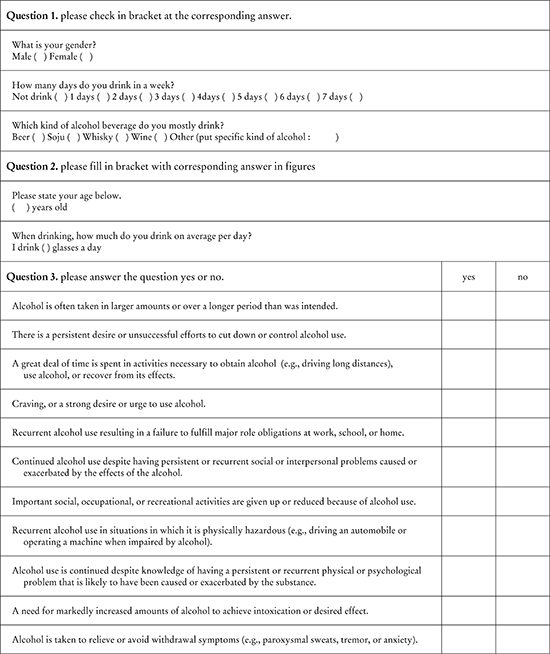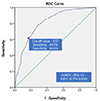Diagnostic Usefulness of Korean Standard on Heavy Drinking for the DSM-5 Alcohol Use Disorder
Article information
Abstract
Background
This research investigated the usefulness of heavy drinking standards of ‘guidelines for moderate alcohol drinking amount for Koreans’ for diagnosis of Diagnostic and Statistical Manual of Mental Disorders 5th edition (DSM-5) alcohol use disorder.
Methods
This retrospective study was conducted with 976 adults who visited an health screening center in Daejeon for health check-up in 2015. Daily drinking amount, drinking frequency per week, and weekly drinking amount were investigated. Using the heavy drinking criteria of Korean guideline, participants were grouped by age and gender and classified as normal or heavy drinkers. The sensitivity, specificity, positive predictive value (PPV), negative predictive value (NPV), Positive likelihood ratio (LR+), Negative likelihood ratio (LR-), odds ratio (OR) and Youden's Index of heavy drinking according to Korean guideline for diagnosis of DSM-5 alcohol use disorder were calculated.
Results
The Area under the receiver operating characteristic (ROC) curve of a model screening DSM-5 alcohol use disorder by weekly drinking amount were 0.812 in males up to age 65 years and 0.931 in males over age 65 years and females respectively. The sensitivity, specificity, PPV and NPV of Korean guideline heavy drinking group for diagnosis of DSM-5 alcohol use disorder were 61.0%, 89.7%, 67.0%, and 87.05% respectively. The LR+, LR-, OR and Youden's Index of those were 5.917 (4.704-7.435), 0.434 (0.379-0.497), 13.623 (9.607-19.317), and 0.507 respectively.
Conclusions
This research shows the Korean heavy drinking standard is useful for diagnosis of DSM-5 alcohol use disorder in Korean people.
Notes
* This manuscript is based on the first author's doctoral dissertation from Chungnam National University.
Appendices
Appendix
Questionnaire for drinking habits investigation





